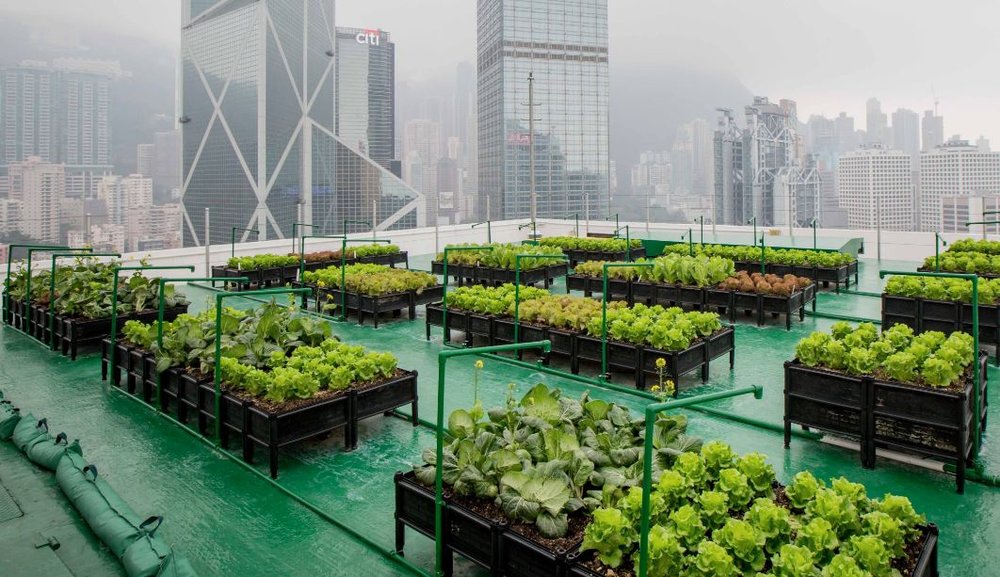The Greatest Guide To City Blooming
The Greatest Guide To City Blooming
Blog Article
What Does City Blooming Do?
Table of ContentsThe smart Trick of City Blooming That Nobody is Talking AboutThe smart Trick of City Blooming That Nobody is DiscussingCity Blooming for BeginnersEverything about City BloomingThe smart Trick of City Blooming That Nobody is Talking About
Fascinated in growing food offer for sale in the City of Chicago? Assuming regarding starting a community garden? Adjustments to the Chicago Zoning Ordinance allow agricultural usages like area gardens and metropolitan farms in numerous components of the city. Below is a checklist of often asked concerns regarding the regulations and policies that growers need to think about when intending a metropolitan agriculture project.
The zoning amendment does not customize any kind of various other codes handling composting, structure licenses, acquiring or leasing City possessed property, company licenses or ecological contamination. There are existing codes that control these issues and they continue to be completely result and might apply to your task. Community gardens are usually had or handled by public entities, civic organizations or community-based companies and kept by volunteers.
Urban farms expand food that is planned to be sold, either on a nonprofit or for-profit basis. Due to their industrial objective, metropolitan farms need an organization certificate.
City Blooming Can Be Fun For Anyone
Composting is permitted but just for plant material that is generated and utilized on website. The quantity of garden compost material can not exceed 25 cubic yards at any type of provided time according to the requirements in 7-28-715 of the City's Municipal Code. Yes. Since the dirt at the majority of brand-new yard websites needs modifying, compost, soil, timber chips, or various other materials can be gotten to build or enhance the growing area - container and raised bed gardening etc..

If a building license is required after that the hoophouse will be taken into consideration an accessory structure. You can discover more concerning the building authorization requirements by speaking to the Division of Structures. The 25,000-square-foot size limit is planned to stop a solitary area garden from dominating a provided block or taking away from the block's existing property or industrial character.
The limitation does not apply to yards situated in Public Open Area (POS) districts. Can there be more than one area yard that is 25,000 square feet on a solitary block? Secure fencing is not needed, nevertheless, gardens that have huge car parking areas might be called for to set up fence or various other landscape design functions.
City Blooming - Truths
B1 & B2 districts require that all business usage activities be performed inside your home. R districts restrict commercial activity. The guidelines mirror the function and intent of the Zoning Code. Is secure fencing needed for city ranches? Yes. Fences might be needed, together with more helpful hints landscape design and screening, for sure auto parking areas and outside work or storage space areas depending upon place and the details activity taking area.
Yes. Urban ranches need building authorizations and zoning approvals before building. Various other kinds of city review might be called for depending upon particular structures, activities, dimension, landscaping, licensing, public heath and stormwater administration problems. Many of these needs are recognized in the project design or allowing procedure, however, the candidate may be accountable to individually recognize details licenses or allows that might be needed.
The Department of Organization Affairs and Customer Security can help determine the details type of company certificate that's called for. Off street vehicle parking is required for many commercial jobs in Chicago. The needed number of car parking rooms is based on the number of workers functioning on site and not the square video footage of the growing area.
The Definitive Guide to City Blooming

A metropolitan ranch can offer compost material produced on website, nevertheless, the operation should comply with the regulations in 7-28-715 of the Chicago Municipal Code. Aquaponic systems are enabled indoors on metropolitan ranches in many zoning areas.
As much as five hives or colonies of honey bees may be kept as an accessory usage. However, beekeepers must register with the Illinois Department of Agriculture. For more information about the recommended zoning amendment you might get in touch with the Division of Housing and Economic Growth, Bureau of Planning and Zoning at 312.744.8563.
Farming in cities and metropolitan areas A metropolitan farm in Chicago. Urban agriculture refers to various practices of cultivating. https://penzu.com/p/e1495b371b86caaf, handling, and dispersing food in metropolitan areas. The term likewise relates to the area activities of pet husbandry, tank farming, beekeeping, and horticulture in a city context. Urban agriculture is distinguished from peri-urban farming, which takes location in rural areas at the edge of suburban areas.
The Single Strategy To Use For City Blooming
It can involve an activity of natural growers, "foodies" and "locavores", who seek to form social networks based on a shared principles of nature and area holism. These networks can create by means of formal institutional assistance, becoming incorporated right into local town as a "change community" motion for sustainable urban development.
The more straight accessibility to fresh veggie, fruit, and meat products that might be realised with city agriculture can improve food security and food safety and security while reducing food miles, causing reduced greenhouse gas emissions, thus adding to environment change reduction. Some of the initial proof of city agriculture originates from Mesopotamia.
Report this page